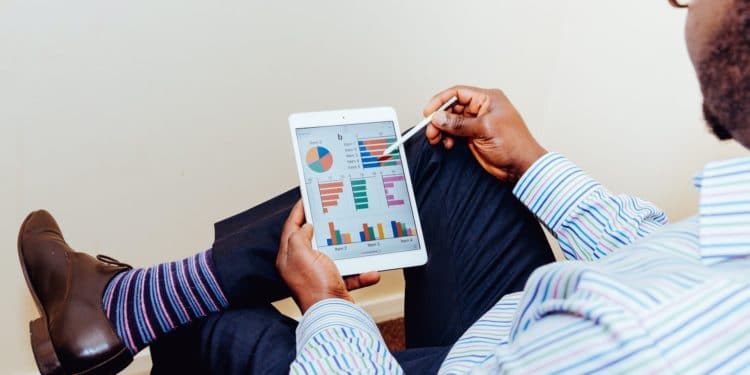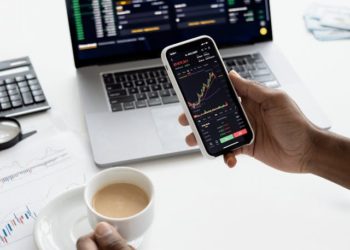The securities markets have been on a roller coaster ride since the beginning of the year. But volatile prices spell opportunity for people who know how to use inherent market instability to their advantage. Events like the Ukraine-Russia war, rampant worldwide inflation, the never-ending COVID pandemic, an ongoing supply chain crisis, and more have contributed to a year in which nothing seems stable or predictable.
For investors who want to achieve financial stability and make the most of unique opportunities, 2022 is a time to get busy. That means learning a few basic tactics for capitalizing on seesaw stock charts in the wisest and most efficient way possible. One of the most powerful tools accountholders have at their disposal is leverage. It allows investors to magnify their financial strength and control more assets than they’d otherwise be able to. It’s essential to review a few time-tested strategies for not only using leverage but avoiding the risks associated with it. Finally, work through a case study to solidify your grasp of how the method works, and then take a closer look at a few of the most worthwhile markets to follow between now and the beginning of next year.
How to Capitalize on Price Volatility
Using CFDs (contracts for difference) to capitalize on volatility is a strategy that makes sense. That’s because it’s possible to not only use leveraged trades but also avoid the risk of owning the underlying assets. You can make very small trades when using CFDs, too, which make it simpler for new traders to get involved in the markets. Using contracts for difference is easy, plus you can go short or long without any hassles. CFDs allow traders to operate in virtually any asset class and design their own long-term plans.
Leveraging the Power of Leverage
The concept of magnifying the size of investment capital has been around for more than 100 years. Nowadays, leveraged buying is much more common than ever, particularly because most reputable brokers offer the service. How can you use the tactic to earn better returns and control more assets with every transaction? The first step is to acquire the most relevant facts about leverage.
Most accountholders learn about leveraged trading with AvaTrade, top brokerage firms they can deal with. In that way, they’re able to discover the real world, as opposed to theoretical, benefits of magnifying their buying power. Simply put, leveraging lets you control a multiple of your cash investment. When things go well, you stand to earn magnified returns. Of course, losses are also larger when trades go against you. You can use the technique with CFDs (contracts for difference) to double the advantage. Not only do you get more buying power but you acquire the protection of not owning the underlying assets. Leveraging with CFDs is one of the most potent strategies in modern securities trading.
Avoiding the Risks
There are obvious risks involved in leveraging, the main one being that you could experience larger than usual losses. Remember, all the results of a given trade are magnified, both the good ones and the negative ones. In addition, some traders are tempted to leverage more than they reasonably should, which exposes them to excess risk. What’s the best way to avoid both of those risks? As with so many other types of asset trading, start small and set accurate stops whenever possible. Always know exactly what your potential downside is if a trade goes against you. Calculate the figure before committing to the transaction. Look at both the upside and downside whenever you plan a trade.
Another advantage is that you can gain access to pricier securities. Suppose you could not afford to pay in excess of $200 for a single share of stock, given your current account balance and trading rules. However, when you get the chance to magnify buying power by a ratio of, say, 100-to-1, it’s possible to purchase just about any security you desire. On the negative side, there are additional fees for account holders who regularly use leveraged trading techniques. Brokers have to cover their side of the risk, and that means charging clients who want or need excess buying power. Depending on how many transactions you do per week or month, fees can add up. So can losses on just a few highly leveraged trades. The good news is that with careful planning, meticulous stop setting, and plenty of preliminary research, investors can offset nearly all the downside and survive with their accounts intact.
Markets to Watch Leading Up to 2023
As the second quarter of 2022 enters its midpoint, there are several choice opportunities for people who hope to keep investing costs down and prefer to follow the news and take advantage of fresh market developments as they happen. For starters, the price of oil has spiked three times since Russia invaded Ukraine. As long as the conflict continues, the chances are that petroleum will be a very unstable commodity. That kind of volatility spells opportunity because once the war in Eastern Europe ends, the price of oil will likely begin to return to its 200-day average. For anyone who likes to short volatile commodities, there could be prime opportunities in petroleum in the second half of 2022.
Cryptocurrency is the other potential breakout asset to follow for the balance of the year. Bitcoin, the sectors leader, could hit new highs as consumer and retail acceptance expands, blockchain infrastructure continues to grow, and prices, though highly volatile, head generally upward. Will 2022 be the year bitcoin reaches the psychologically important $100,000 point? It’s possible, given the coin’s several attempts to break above the $70,000 mark.











































































